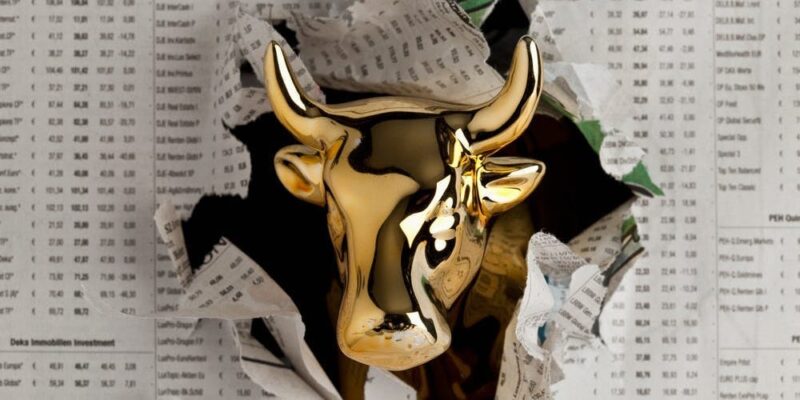- Recession fears driven by inversion in the bond yield curve might be overblown, market bull Tony Dwyer told CNBC.
- The Canaccord strategist said steepening another part of the US Treasury is a positive sign.
- Dwyer acknowledged the fixed-income market is reflecting economic challenges, but not enough to trigger a recession.
Wall Street's fears that Federal Reserve interest-rate hikes could lead to a recession are overblown, according to Canaccord Genuity's Tony Dwyer.
Investors have become increasingly focused on inversion in parts of the US Treasury yield curve — historically, a harbinger of a slump — as the Fed's aggressive plans drove a sharp rise in bond yields.
Dwyer told CNBC's "Fast Money"on Monday that the fixed-income market is reflecting concerns of an economic slowdown, but not to the extent that a US recession could be triggered.
"The fear is definitely there. Asia seems to be a mess with more lockdowns. Europe is heading toward a recession, if not in one because of the once in a generation ground war there," he said. "The US is being affected by higher rates. So, it certainly is slowing down."
"But we don't look for a recession, because of that yield curve that's driving the lending is still very positive," the chief market strategist added, pointing to the 5-year/3-month curve.
An inverted yield curve, where short-term interest rates are higher than long-term ones, has in the past been an indicator that an economy is close to a downturn. That's because it signals tight conditions for companies looking to raise debt.
The curve of the 2-year and 10-year Treasury notes has flattened in recent weeks, after Fed policymakers hiked interest rates for the first time since 2018.
Meanwhile, the yield on the 5-year Treasury note has risen above that on the 30-year note, which hasn't happened for the last 16 years.
Dwyer acknowledged the worth of the indicator, but suggested the reaction could be overblown.
"I think the biggest fear that it's overestimating at this point is the 2/10 flattening or the 5-year to 30-year. I understand why we use that, and it is very useful at times," he said.
But he said the 5-year/3-month yield actually shows a positive picture, because it's steepened — which typically signals expectations of stronger economic activity.
Dwyer noted the yield curve is important because it reflects the difference between how much interest a lending institution pays on deposits, versus how much it gets from lending or investments.
He said since February 2020, $4.75 trillion has been put into commercial bank deposits, and the average duration is about six and a half years. "So we're using the 3-month and 5-year," he said.
Dwyer also said despite a slowdown, the Fed will have to hike interest rates to try to tame US inflation, which in February hit its highest level in 40 years.
"There's no question inflation's high. Rates are going higher. The Fed's in a box. No matter the slowdown, they've got to raise rates."
"There's no world in the next couple of months where they get better in terms of inflation," he added.
Investor sentiment seems to be reflecting expectations that there will be some sort of inflation relief, Dwyer suggested.
"The market seems to be almost pricing in a recession trade because the areas that should do the best with higher rates have been lagging," he said. "And the areas that should do the worst — the FAANG stocks, the mega-cap valuation names — they're doing better."
The S&P 500 is down 4% so far this year, and the tech-heavy Nasdaq is down 8%.










